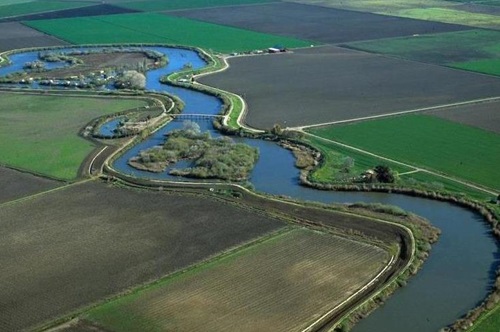Secretary Laird: We’re at a major tipping point in water in California
At the Southern California Water Committee’s Quarterly Luncheon, guest speaker Secretary Laird, California Natural Resources Agency, stated, “We’re at a major tipping point in water in California.”
California’s water issues are escalated by the state’s outdated water delivery system and the unprecedented drought. The Sacramento-San Joaquin Delta, where water supplies are drawn for most of the state’s population, is protected by dirt levees vulnerable to earthquake, rising sea level, and flood. The federal and state water project pumps in the Delta frequently must be curtailed, even after winter storms, to protect threatened and endangered fish. Last winter brought near-average levels of rain and snow to Northern California, but reservoirs in Southern California have not recovered from four consecutive drought years, and it will take many years for the state’s groundwater aquifers to recover.
Secretary Laird made the case for California WaterFix, the federal and state proposal to modernize how water is diverted in the Delta by the federal and state water projects in order to better protect native fish species and allow for water diversions when flows are high. Below are three points he touched on at the event:
1. Missed Opportunities
Between January and March, water agencies lost the opportunity to capture and store a huge volume of water to store for dry years. According to the Department of Water Resources, had California WaterFix been in place, an estimated 486,000 acre-feet of water, enough to supply 3.6 million people for a year, could have been captured without violating rules to protect native fish or water quality.
2. Local Projects Are Crucial But Not Enough
“Our state needs a reliable source to make conservation and other strategies work,” said Secretary Laird. California is already making unprecedented investments in helping local water districts with conservation, desalination plants, stormwater capture, groundwater clean-up, and recycling. However, these projects alone cannot substitute for the State Water Project (SWP) – which serves two out of three Californians. SWP deliveries from the Delta make up as much as 80 percent of the supply of some water districts in both Northern and Southern California, and SWP water is also often blended with local water supplies to meet water quality standards.
3. California WaterFix Is The Best Approach
Secretary Laird also discussed that the state has looked at alternatives (laid out in the extensive environmental analysis documents that top 34,000 pages), and recommends California WaterFix as the best approach to meet the dual goals of helping the Delta ecosystem and stabilizing water supplies. The project was developed over nearly a decade of extensive expert review, planning, and scientific and environmental analysis. Not only will it secure a core portion of California’s water supplies, it complements local supply projects by capturing additional water during wet years and enabling voluntary transfers of water.
Now more than ever we need California WaterFix to resolve our state’s water challenges. The project addresses our state’s aging water infrastructure and protects our economy and public safety. It’s critical to move California WaterFix across the finish line – if we don’t take action we risk the erosion of 30 percent of our Southern California’s water supply.
To learn more about California WaterFix, visit: www.californiawaterfix.com.
We’d like to extend our thanks to Central Basin Municipal Water District and West Basin Municipal Water District for sponsoring SCWC and the Quarterly Board Meeting!
